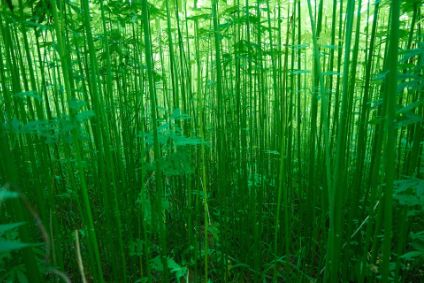
While hemp is trending in a number of industries globally, when it comes to apparel production, its use is relatively new.
Footwear brand Ugg last month launched a line using plant-based materials including hemp, while Superdry notes one-third of its garments contain organic, recycled and low impact fibres including Tencel, hemp, yak or linen.
But with enviable sustainability benefits, the apparel industry is now paying increased attention to the fibre, particularly as it seeks out new and more environmentally-friendly alternatives to cotton.
Panda Biotech is developing the largest and most state-of-the-art industrial hemp processing centre in the United States, to both process and cottonise industrial hemp fibre in commercial quantities.
The cottonisation process removes the lignin that binds hemp fibres together in bundles and “opens” them for further refinement. Once cottonised, the hemp fibre can be blended with other natural or man-made fibres – such as cotton, silk, wool and polyester – and spun into yarns that will be knit or woven into fabric.
Just last week, Pakistan’s AGI Denim inked the first global production partnership with Panda Biotech to use its US-grown industrial hemp, which can be tracked and traced back to its American farmers.
AGI has already made great strides in developing innovative alternatives to traditional denim manufacturing and processing methods, including a Gold Level Cradle-to-Cradle Certification for its latest hemp-based fabric material, Hemp X.
Speaking during a webinar for the Kingpins24 virtual event last week, Ali Tekken, R&D director of AGI Denim, touted the benefits of hemp and why it is proving a worthy contender to cotton.
“We need a natural fibre alternative to cotton,” he asserted, noting the rapid land and water depletion linked to cotton farming. “Some research suggests that by 2030 there will be a 20m tonne shortage of fibres. We don’t have any other option.”
Blended with cotton and other fibres, industrial hemp offers a host of environmental benefits, including the ability to absorb more carbon dioxide per acre than any forest or commercial crop. It requires a fraction of the water needed by most major crops, can grow in a wide variety of climates and soil types, is naturally resistant to most pests, and grows very tightly spaced – allowing it to “outcompete” most weeds.
“Hemp is important because of its different features,” said Tekken, pointing to the fact that hemp does not require pesticides and fertilisers.
“There are huge environmental benefits, including that of water. Yes, hemp requires water for agriculture, but where for 1kg of cotton you need 10,000 litres of water, 1kg of hemp will use 2,000 litres of water, meaning 80% less than cotton.
“Also, in terms of carbon dioxide absorption and emissions, hemp absorbs four times more carbon dioxide than a traditional forest. It is like a natural carbon equaliser.”
The global industrial hemp market is projected to grow from $4.6bn in 2019 to $32bn by 2022.
The US hemp industry has opened up thanks to the passage of the federal Hemp Farming Act of 2018, which was incorporated in the 2018 US Farm Bill and signed into law by President Trump. Both chambers of the Texas state legislature subsequently passed House Bill 1325, that was signed into law in June 2019 and authorises the production and manufacture of industrial hemp crops in the State of Texas.
Most of the consumer textile applications for hemp tend to focus on products such as rugs, upholstery and other home furnishings.
The challenge of integrating hemp into the apparel supply chain requires finding and learning to grow a regionally appropriate seed variety. There’s also the issue of incorporating it into US mills’ cotton-based spinning systems to produce apparel grade fibres and yarns. But the upside is the fibre’s enhanced environmental and performance attributes.



